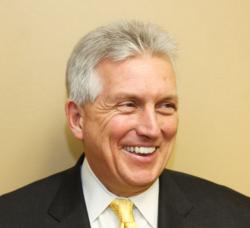Day: June 1, 2018
Transforming Followers Into Leaders
Recently I witnessed an unfortunate incident. A very successful church that had experienced rapid church growth lost its founding pastor. After increasing turmoil he was asked to leave. It created quite a stir, because many within the congregation thought highly of this pastor. The conflict didn’t emanate from any moral failing; it came from disagreements about leadership style.
Unfortunately, the church’s governance structure didn’t help matters. The staff the pastor hired and supervised were also made elders. Certainly there were complaints from employees that the pastor freely admits were shortcomings. Some felt they were being directed more than led; others alleged the pastor was somewhat despotic.
However, all of this seemed a bit extreme and probably could have been avoided. The players needed simply to understand their roles and communicate in a manner consistent with Matthew 18:15-17. I’m sure I don’t have all the details, but when organizations begin to falter, it’s usually because leaders and/or followers aren’t willing to communicate effectively.
Transformation over Exploitation
First, the leader-follower relationship is more about transformation than exploitation. Specifically, leadership is the intentional transformation of people and organizations for the better, which implies two-way communication. However, that concept sometimes gets lost in pursuit of individual agendas, like they did at this church.
A Lesson from Dickens
A Christmas Carol, offers a good example of transformational leadership. The main character Scrooge was led (by spirits of Christmas past, present and future) through purposeful and sometimes painful experiences that transformed him. When they were done, Scrooge clearly understood his own selfishness and the needs of others around him. He used his resources to transform lives of others because he himself had been transformed. James MacGregor Burns defines this as transformational leadership, where leaders recognize and act on higher needs in followers (love, hope, esteem) and engage them fully. According to Burns,
“… transforming leadership raises the human conduct and ethical aspiration of both leader and those led. Leadership occurs when one or more persons engage with others (so) that leaders and followers raise one another to higher levels of motivation and morality. Their purposes, which may have started out as separate transactions, become fused.”
In other words, though leader-follower relationships begin transactionally, they shouldn’t end there. As leaders earn credibility through transactions with followers, they gain power to elevate followers in transformational ways. As Burns says, transformational leadership moves followers “to higher levels of motivation and morality.” However it also implies loyalty and commitment towards the leader. In the case of the church those characteristics were lacking. In fact, their unrealistic expectations never allowed them to get beyond the transactions.
Jesus – A Model Leader
No leader has influenced more people or changed the world more profoundly for good than Jesus of Nazareth. In Jesus, we have arguably the best example of transformational leadership.
Jesus understood the intrinsic value and human needs of followers. Initially He engaged in transactions that He initiated. For example, He filled their boat with fish, thereby gaining credibility and their allegiance. Throughout all of His interactions, Jesus related to followers in ways that demonstrated genuine regard for them. That regard was manifest in multiple acts of love, kindness and service He performed, and it transformed them.
As a result, His disciples deepened their commitments both to Jesus and the common purpose they shared. Specifically, by teaching, challenging and loving these followers, Jesus transformed them into courageous and committed leaders. His mission became their mission. So powerful was their transformation, that they boldly followed Jesus in ways that cost most of them their lives. Yet, the power to lead and transform came not through Jesus’ positional power. Instead it came through relational power that Jesus built with His followers. As nonprofit fundraising consultants, we see that churches and other organizations excel when they follow this same model.
